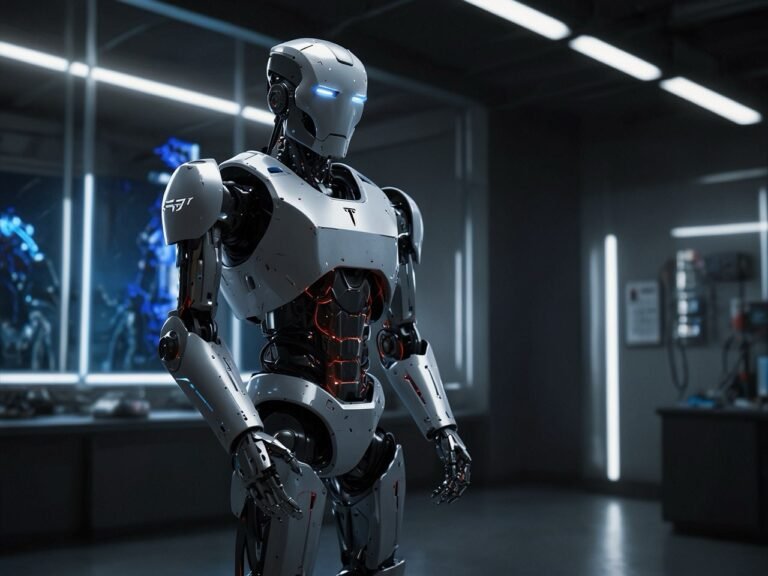As we look toward a future where technology and automation continue to advance rapidly, the idea of military robots entering not just battlefields but also workplaces raises intriguing possibilities—and concerns. Here’s a closer look at this topic, with a breakdown of potential pros and cons to help shape an informed perspective.
Potential Benefits of Military Robots in the Workplace
1. Enhanced Safety
Robots designed for military use are built to withstand extreme conditions, so they could be very helpful in high-risk workplaces, such as construction, mining, or hazardous materials handling. By taking on dangerous tasks, these robots could help protect human workers from injury, illness, and even death. Imagine a robot handling toxic chemical clean-ups or deactivating explosives safely.
2. Increased Efficiency and Productivity
Military robots are engineered for precision, speed, and stamina, making them ideal for repetitive and strenuous tasks. Robots like these could operate 24/7 without fatigue, allowing companies to speed up production cycles. With fewer human hours needed for mundane or physically demanding jobs, employees could focus on more creative or strategic roles.
3. Reduced Costs Over Time
Although the upfront cost of military-grade robots may be high, they could save companies money in the long run by reducing labor costs, downtime due to human error, and on-the-job injuries. Robots don’t need breaks, vacations, or health insurance, which can significantly reduce operational expenses over time.
4. Support for Disaster Relief and Rescue Operations
In times of disaster, military robots can be a vital asset. Imagine a workplace hit by a natural disaster—robots could help locate trapped individuals, deliver supplies, or support evacuation efforts. For businesses in disaster-prone areas, having these robots on hand could be invaluable for keeping employees safe and maintaining operations.
Concerns and Drawbacks of Military Robots in the Workplace
1. Loss of Jobs and the Human Touch
As robots take over more roles, especially ones that were traditionally done by humans, there’s a real risk of job loss. Entire industries could see major shifts, leading to significant unemployment or a need for retraining workers. Plus, robots might be efficient, but they lack the personal touch that many clients and customers value.
2. Security and Privacy Issues
Military robots equipped with advanced surveillance technology could lead to privacy concerns in workplaces. If these robots are designed to gather data or monitor employees, there could be an unsettling level of oversight. In workplaces where privacy is valued, introducing robots with surveillance capabilities could raise ethical questions about employee rights.
3. High Initial Investment and Maintenance Costs
Military-grade robots are complex and expensive, and companies may not be ready for the financial commitment required to purchase, install, and maintain them. Even though they could save money over time, the initial investment could be a barrier, especially for small businesses or industries with tight budgets.
4. Ethical Concerns Around Weaponization
Introducing military robots into civilian workplaces might lead to worries about the potential for weaponization. While most workplaces wouldn’t require armed robots, the mere presence of military-grade robots could provoke anxiety, especially if they were adapted from combat use.
5. Reliance on Technology and Risk of Malfunctions
Technology can fail, and in the case of complex military robots, malfunctions could pose serious risks. Dependence on robots could also leave companies vulnerable if systems go offline, leading to potential downtime or even accidents. Additionally, the hacking of military-grade robots could compromise safety and data security, which could have devastating effects.
A Balanced Perspective
Military robots entering workplaces is a concept with clear advantages, especially when it comes to safety and efficiency. However, there’s a pressing need to balance these benefits with ethical considerations and the potential impact on employment. The use of robots in dangerous or highly repetitive tasks could make workplaces safer and more productive, but companies should tread carefully, keeping employee rights and safety top of mind.
Moving forward, here are some considerations for a balanced integration:
• Clear regulations to prevent misuse and protect employee privacy.
• Training programs to help workers transition to roles that complement robot-driven tasks.
• Ethical standards ensuring that robots designed for military purposes are adapted responsibly for civilian workplaces.
As with any transformative technology, the key lies in responsible implementation, a strong focus on human welfare, and an ongoing dialogue about the social and ethical implications.


